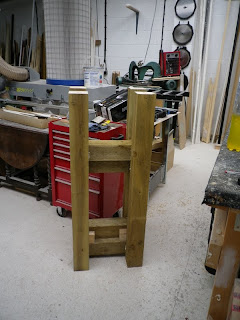Here is another example (I think so anyway!), of a well designed compo ornamented frame, I especially like the scrolling pattern. I think this style was generally called a Lawrence frame, after the artist Sir Thomas Lawrence, although I don't know if he used this exact style. Some interesting articles by Jacob Simon on Lawrence can be found on the National Portrait Gallery site:
Thomas Lawrence and Picture Framing






















































